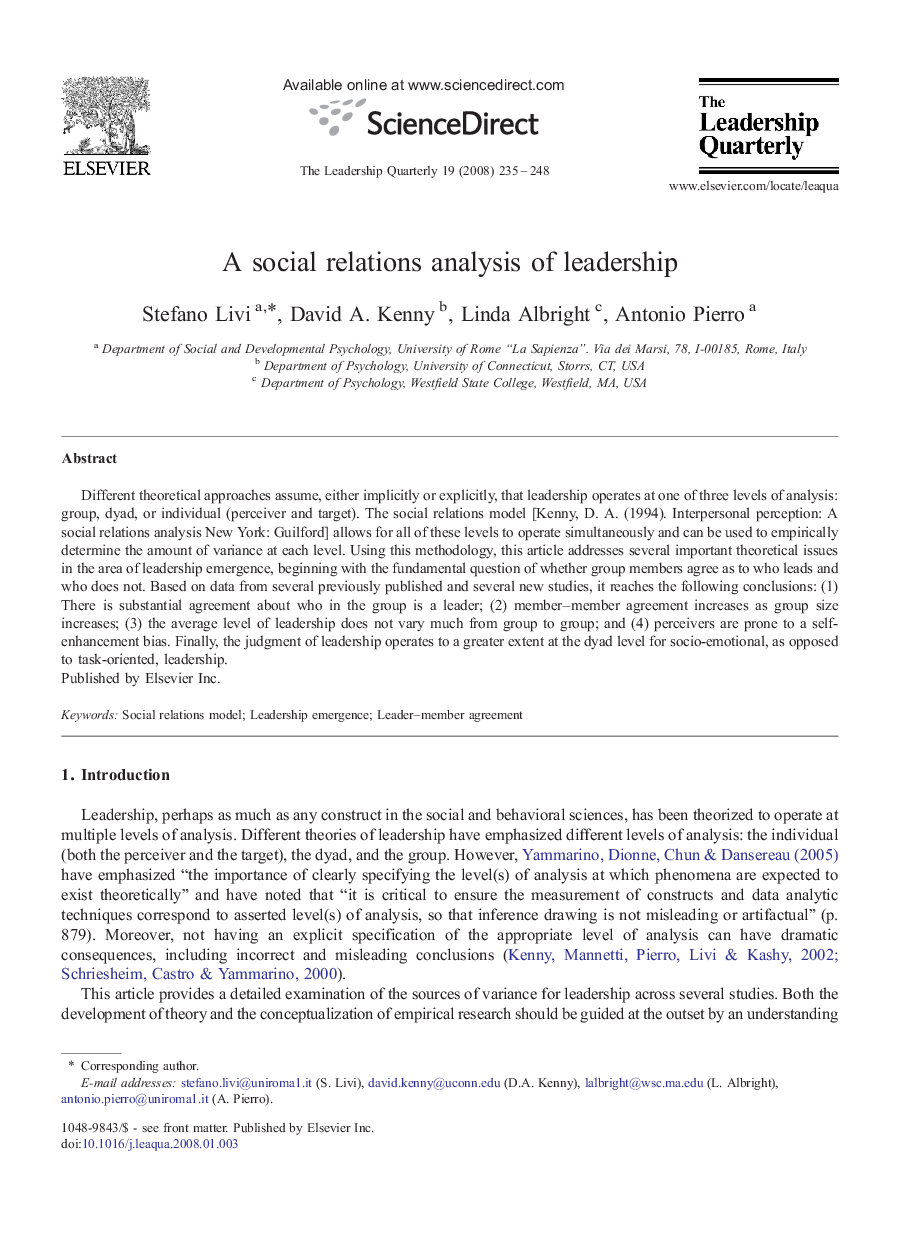| کد مقاله | کد نشریه | سال انتشار | مقاله انگلیسی | نسخه تمام متن |
|---|---|---|---|---|
| 888356 | 913461 | 2008 | 14 صفحه PDF | دانلود رایگان |

Different theoretical approaches assume, either implicitly or explicitly, that leadership operates at one of three levels of analysis: group, dyad, or individual (perceiver and target). The social relations model [Kenny, D. A. (1994). Interpersonal perception: A social relations analysis New York: Guilford] allows for all of these levels to operate simultaneously and can be used to empirically determine the amount of variance at each level. Using this methodology, this article addresses several important theoretical issues in the area of leadership emergence, beginning with the fundamental question of whether group members agree as to who leads and who does not. Based on data from several previously published and several new studies, it reaches the following conclusions: (1) There is substantial agreement about who in the group is a leader; (2) member–member agreement increases as group size increases; (3) the average level of leadership does not vary much from group to group; and (4) perceivers are prone to a self-enhancement bias. Finally, the judgment of leadership operates to a greater extent at the dyad level for socio-emotional, as opposed to task-oriented, leadership.
Journal: The Leadership Quarterly - Volume 19, Issue 2, April 2008, Pages 235–248